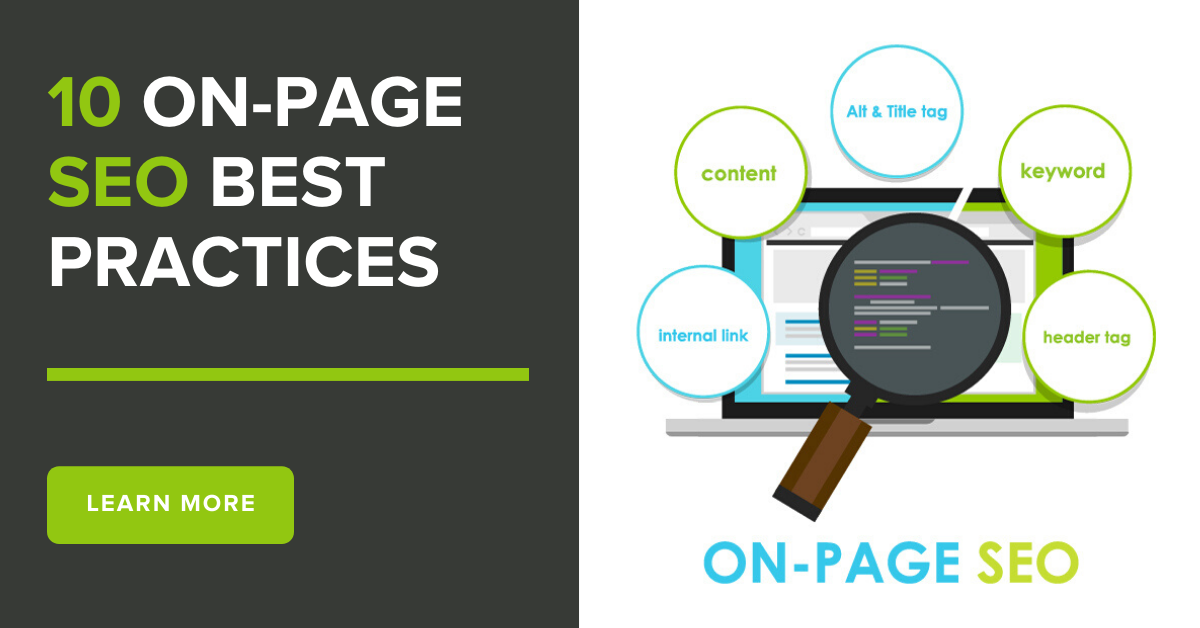
If you're wondering how to write SEO content, then read this article. How to outline your article and research your keywords. Also, how to incorporate secondary keywords. Be sure to include transition words. After you have written your content, optimize it for search engines. Here are some great tips. These are some key tips to make sure your article is more search engine-friendly.
Your content should be outlined
An effective strategy to ensure your article's SEO content is search engine-friendly is to outline it. There are many ways to structure your outline. The C.R.A.A.A.P. method is the best. The C.R.A.A.P. method is a good way to start. These are just a few examples of how to structure an outline.
An outline helps you to identify the thin sections and decide if a section is needed. It can help you decide if to merge more than one topic or if certain sections should be nested. You can use it to determine who your target audience is, as keyword placement is just one of many factors that must be taken into consideration. A good outline will include all the elements needed to write an excellent blog post. Here are a few advantages to outlining your SEO content:
You will need to make a brief outline about the content you are going to create. In this outline, include your primary keyword as well as a list of related terms. Your target audience, word count, as well as audience should be considered. Include the core questions you are looking to answer, call-to-action, suggested meta description and title tag. Don't forget to outline your subheadings, links, and subheadings. A content outline is a way to ensure cohesion within your content and make use of the time you have available for writing.
Always have a purpose behind your blog post. Avoid using cliches or cliches. Your blog post should engage and be relevant to your audience. In the introduction, include your target audience. This will increase the interest of your audience in your content. It will also make it easier for them to read. You should outline your SEO content before starting to write. This can help you create better blog posts.
Search for keywords
There are several steps to follow when researching your keywords. First, identify the most crucial keywords. You may think your articles are irrelevant to the topic, but if you use Google Trends or tools like AdWords, you can easily find the most popular keywords for your niche. After you have identified the most common keywords, start thinking of how to adapt your content to this keyword strategy.

Remember that keyword research does not involve tricking Google. It is about determining what your audience wants to read. To create content that people will want to read, it is important to understand how they search. The keyword "Thailand Travel Guide" could refer to either a blog post about Thailand or a human travel book. Your content will rank high if it addresses the needs and wants of your audience.
Once you have chosen the keywords that you want to target you can start to research them. Try Google searches for them and see what comes up on the SERP. You can compare the websites of your competitors to find out which one performs best for your target audience. Also, think about the user intent. Does the keyword suggest that users are searching Thailand travel guides? If so it is better to write about one specific location.
It is also important to check the monthly searches volume for your target keywords. The MSV of your keywords should be analyzed to determine how often they appear in the SERP. This information will help you target more keywords in your content. Once you have compiled a list keywords, you are able to create blog posts or articles based upon each keyword. Also, you should review your content to ensure that there is no keyword cannibalization.
Include secondary keywords
A variety of reasons make secondary keywords a smart choice in SEO content. It helps improve the quality of your content and appeals to readers. Second, it helps you avoid writing articles focused solely on your primary keyword, which is unlikely to match the reader's intentions. By using secondary keywords, your content will better match what your audience is looking for, and the tone of your article will be more natural.
SEO efforts are only as successful as the keywords you choose to use in your content. It will allow your readers to easily navigate your articles and increase their chances being found in search engines. It is important to include your primary keywords at three to five percent density in the article title, first paragraph and metatag description. Secondary keywords can be included in one or two instances throughout your content. This is a great technique to increase search engine visibility for your content.
If you use secondary keywords correctly, your SEO content may boost your rank. Be sure that the secondary keywords you use are related to the primary keyword. These secondary keywords can be used for additional content ideas like an article on a chocolate cake recipe. Review the list before starting to write a section. This is the best way to include secondary keywords. Avoid repetitive writing, and only use synonyms when you absolutely need them. Make sure to use an LSI keyword list to refresh your content.
Google's Autocomplete feature is another way to add secondary keywords to your SEO content. This feature allows users see what others are searching for and then drops the search down to a list of possible keywords. These keywords are not random, but real searches people make online. Secondary keywords can help increase your website's visibility to the reader. You can use the Google Keyword Planner to learn more about secondary keywords and improve your content.
Include transition words
Your SEO content can be differentiated by using transition words. These words do not affect your ranking in the SERPs, but they make it easier to read your posts and improve context readingability. One example is that a transition word can be used to indicate a cause or effect. This guide will show you how to effectively use transition terms. Apply these tips to SEO content.

Transition words are used to indicate the relationships between paragraphs. Without these words, readers might not understand the connections between paragraphs, but when you use transition words, your content will read more clearly, be more engaging, and be more informative. Whether you use transition words for SEO or not, they are necessary for creating clear and well-structured text. You'll get better SEO if you use them sparingly.
You can use transition words to notify your readers of any major changes in the content. You can think of them as a signpost on a long, winding road. Your readers will likely scan through your content quickly, so it is important to use transition words to keep them on track. Although these words may not be the best for every type of content, they will ensure that your reader has a pleasant and productive experience with your SEO content. To learn more about the working of transition words, you can read other content if your SEO knowledge is limited.
Yoast SEO as well as WordPress offer tools that will ensure that your content includes transition words. These tools can analyse your content and help you identify the times it has transition words. These tools can optimize your SEO by using three types of transition words. Yoast SEO uses three types of transition words to make your content more readable and helpful. Yoast also searches for transition words that are divided into two parts.
Optimize your content for speed
There are several ways to optimize your SEO content for speed, and focusing on one of them can greatly increase your site traffic. These guidelines will help you gain an edge over your competition. Meta tags and keyword phrases can be used to make your content search engine friendly. These strategies can improve your page ranking on major search engines.
Use images. Image descriptions are very important in search engine optimization, as they help the reader find your content easier. Not all images can be indexable. To describe images it's important to use HTML's alt text attribute. You should make sure that it is descriptive and gives context to the search engines. HubSpot SEO Panel allows you to identify optimized images. It also helps improve user experience. Additionally, you can add relevant links to your optimized content.
FAQ
How much does SEO cost?
SEO costs are dependent on the size of your company and industry. A few hundred dollars may suffice for smaller companies, while large companies will need thousands. Use our SEO calculator for a free estimate.
How can a content strategy help me get a better ranking?
Content strategy is the process of planning how much content you will produce over time. This includes keywords, topics and other information about you company. This will ensure you don't write too much or not enough content.
How can I increase my Facebook traffic?
Facebook has many ways to increase your website's traffic. Facebook ads is one of your best options. With Facebook ads, you can target specific audiences based on interests, demographics, and location. You can also set up a daily budget so you can see which posts perform the best.
How long does SEO take you to build traffic?
Usually, it takes between 3-4 months to generate traffic through SEO. It all depends on several variables.
-
High quality content on your site
-
Backlinks
-
Targeted keywords
-
Competitor rankings etc.
SEMrush provides a free trial to help you get started in SEO. You can monitor all aspects of your SEO campaign with them, including competitor research and backlink profile, top pages and local listings, organic traffic stats, reports and more.
Statistics
- Which led to a 70.43% boost in search engine traffic compared to the old version of the post: (backlinko.com)
- Sean isn't alone… Blogger James Pearson recently axed hundreds of blog posts from his site… and his organic traffic increased by 30%: (backlinko.com)
- 64% of marketers actively create SEO campaigns because they help hit multiple key performance indicators (KPIs), including increasing traffic, helping your site rank for relevant keywords, improving your conversion rate, and much more. (semrush.com)
- Deleting those 10k pages is one of the main reasons that he improved his site's organic traffic by nearly 90%: (backlinko.com)
- A 62.60% organic traffic boost to that page: (backlinko.com)
External Links
How To
How do I start my first blog.
It's simple! WordPress is an excellent tool for creating a blog. The user can modify the look and feel of their blog easily by adding themes and changing fonts and colors. They can also add plugins which allow them to alter certain aspects of their site based upon visitor activity.
Many free templates are available to download from wordpress.org and premium templates that cost money. Premium templates have additional features, such as more pages, extra plugins and enhanced security.
Once you have downloaded your template, sign up for a free account at a hosting provider in order to upload your files and to run your blog. While many hosting providers offer free accounts, there are often limitations on how much space you have, how many domains can you host, and how many email addresses you can send.
If you wish to use more than one domain, you will need to purchase additional email addresses. This service may be charged by some hosts.
A blog hosted online is a great way to start blogging if it's your first time. Most hosts offer unlimited storage space, meaning your files won't be deleted even if you accidentally delete them.
Many hosts permit multiple domain hosting. You can host several sites under one package. This allows you to sign up for only one email account and manage all your sites via one interface.
Some hosts offer social media sharing buttons that allow visitors to quickly share their posts on the web.
You can usually manage your blog through the tools offered by hosting providers. You can check your site's performance statistics, see how many visitors each post has received and compare your traffic to similar blogs.
These tools can make managing a blog easier and more effective, so you should look into them before choosing a hosting package.
To sum up:
-
You can choose a topic related to your business.
-
Create engaging content;
-
Optimize your site using SEO techniques;
-
Promote your site using social media channels;
-
Keep an eye on your statistics to see if you can make any changes.
-
Keep your blog updated regularly, last but not least.
The bottom line is to create great content, promote it effectively and measure its success.